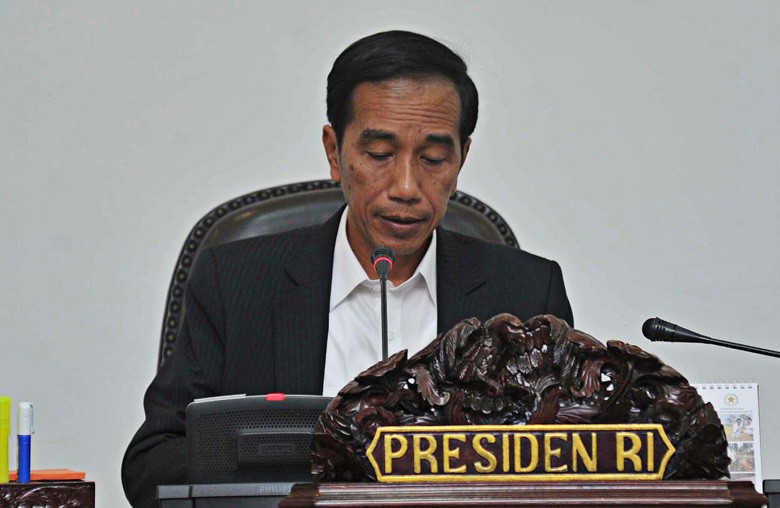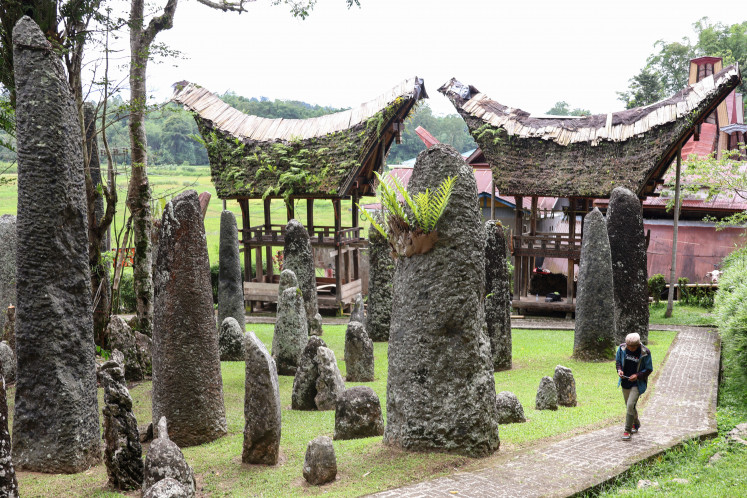Popular Reads
Top Results
Can't find what you're looking for?
View all search resultsPopular Reads
Top Results
Can't find what you're looking for?
View all search resultsBeyond the technocratic approach to tackle inequality
Change text size
Gift Premium Articles
to Anyone
J
oko “Jokowi” Widodo is probably the president in post-Soeharto’s Indonesia with the highest concern for the high level of income inequality in the country. This is not surprising. When taking the presidency in late 2014, he inherited a country with the highest level of income inequality in its post-independent history with a household consumption Gini index of 0.41.
The Gini index is the most popular measure of inequality and ranges between 0 and 1; respectively representing perfect equality when everyone has a similar level of income and perfect inequality when one person holds all the income.
The medium-term development plan (RPJM) of the current administration has a specific target of reducing the Gini index to 0.36 by 2019, when President Jokowi’s term ends. Such a target is highly commendable as this is the first in the history of the RPJM.
The target was probably inspired by reducing the currently high level of inequality to the level of inequality during Soeharto’s new order. The three-decade Indonesian economic development under Soeharto was praised for achieving high growth of around 7 percent while maintaining a relatively stable Gini index within the range of 0.33 to 0.36.
Witnessing the fastest increase in inequality in modern Indonesia, the previous two-term administration of Yudhoyono’s presidency was not unconcerned with rising inequality.
Unfortunately, the concern was simply reduced to focusing on poverty reduction with increased budgets and improved targeting.
The poverty reduction programs were coordinated by the well-funded TNP2K, located in the vice president’s office.
It has to be noted, however, that reducing poverty is different from tackling inequality. While poverty concerns the lower-income strata, say the bottom 10 to 20 percent, tackling inequality is about the distribution of income across all income strata, including the richest 20 or 10 percent.
On this, between 2000 and 2013, inequality in Indonesia increased by 66 percent according to the Palma ratio: the ratio of income belonging to the richest 10 percent divided by the income of the poorest 40 percent.
So far, in dealing with the issue of high inequality, President Jokowi has emphasized three technocratic initiatives: agrarian reform, village funds and infrastructure development. However, their effect on reducing inequality is questionable at best.
The previous agrarian reform, during president Yudhoyono’s terms, administered by his close aide Joyo Winoto as the head of the Land Agency, failed to reduce inequality. Village funds are prone to elite capture; without an adequate accountability mechanism in place, they pose the risk of increasing rural inequality. However, they might reduce the rural-urban gap.
The effect of infrastructure development on inequality reduction depends on the types of infrastructure. Reclamation on the northern shore of Jakarta and the plan to build a high-speed train service between Jakarta and Bandung are completely different from typical infrastructure development during Soeharto’s terms, which focused on building primary schools, community health centers and irrigation systems throughout the country.
The effectiveness of social assistance, initially to combat poverty, on reducing inequality seems to be out of question due to previous experiences and the currently very tight fiscal space.
So, what other options are available out there to reduce inequality?
To answer this question, we probably need to look beyond the technocratic approach.
The current administration needs to explore the political dimensions of inequality and explore the non-budgetary power with which the President is equipped.
This leads to two possible avenues: strengthening anti-corruption efforts and making public service more efficient.
These are not new. They are basically Jokowi’s initial promises as a newcomer to national politics two years ago and do not originate from political establishments. With a clean track record freeing him from vested interests, he was seen as someone who would commit to combating corruption.
As a businessman, he wanted to see public sector works become much more efficient.
These formed his reformist credentials, at least, on combating corruption and making the public sector more efficient.
However, commentators have claimed that after passing a terribly steep learning curve in the first year of his presidency and, then, consolidating power in his hands by removing the second, third, even fourth most powerful persons, he has turned into a skilful politician for his political survival, while the promise of reforms seems to have faded away.
Corruption is the game of the elite class, who are likely to be part of the richest 10 percent. Corruption creates rents out of government projects or consumer/producer surpluses, then the rents are kept within the hands of few. This process causes funds to be filtered upward, benefiting the few, rather than trickling down for the sake of the many.
In short, corruption unjustly reallocates funds from the many to benefit the few, skewing income distribution toward the rich. This is clearly an inequality-increasing process. Empirical evidence on this mechanism is widely available in academic literature.
Therefore, increased corruption, unfortunately facilitated by democratization and decentralization, is one possible explanation for rising inequality.
But Jokowi’s commitment to strengthening anti-corruption measures seems to be weakening.
A second factor to consider is making public services more efficient, as this will maximize the widespread welfare effect of public spending and benefit the majority more than the upper or lower ends of income distribution.
The claimed effect of Jokowi’s populist public spending on health, education and infrastructure on reducing inequality is subject to efficient public services delivering these.
Again, unfortunately, little progress can be seen on this. Jokowi’s previous minister responsible for bureaucratic reforms only made blunders rather than paving the way to making the bureaucracy more efficient.
This is a reminder for Jokowi’s administration, in the remaining three years of his term, to utilize the two initial reform agendas of combating corruption and making public services more efficient, not only for the sake of fulfilling the promise of reforms but to reduce income inequality. This is an unseen benefit of the reforms.
With regard to tackling rising inequality, the two reforms, combating corruption and making public services more efficient, are basically low-hanging fruits. But someone has to remember that there are, in fact, low-hanging fruits.
Meanwhile, reaching the high-hanging fruits of social assistance, land reform and village funds should not be ignored so poverty can be reduced and, hopefully, inequality tackled.
—The writer is a senior lecturer in development studies at Western Sydney University, Australia, currently on sabbatical leave as a visiting academic at SMERU Research Institute and Bogor Agricultural University.










